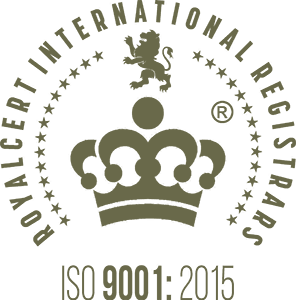How are MRO providers building MRO capability and what challenges are they facing?
A surprising number of small airlines went into bankruptcy during 2023/24. FlyBe (UK), Aeromar (Mexico), GoFirst (India), Flyr (Norway), Cascadia Air and Lynx (Canada). Airline operations is of course expensive business but financial challenges related to maintenance services that have grounded aircraft – especially new generation ones – and aircraft and engine delivery delays have made the cost of running an airline prohibitive. Case in point: 50% of GoFirst’s A320neo fleet had been grounded since December 2022 due to an issue with Pratt and Whitney’s geared turbofan (GTF) engines.
The same problem is expected to ground 350 aircraft between 2024 and 2026. This is putting immense strain on a vastly under-resourced and under-pressure maintenance, repair, and overhaul (MRO) industry and has become a critical bottleneck for airline operations and fleet availability with aircraft shop visits taking up to 12 months or more.
So far so familiar. The MRO industry’s severe challenges should no longer surprise anyone. Nor are they limited to any one region or sector or type of aircraft. It’s a global malaise and affects the entire MRO supply chain from parts to talent. New generation engines and aircraft are only making the problem worse – especially in the Middle East – home to grand visions and ambitious plans – and record-breaking orders for new fleets.
The more important question is how is the industry addressing this challenge?
What are MROs in the Middle East doing to expand capabilities and improve services amidst a severe shortage of skilled aviation maintenance personnel. Part of the answer is that this is not a problem MROs can solve on their own. It will require collaboration between governments and airlines, MROs and OEMs as well as the establishment of technical training programs and dedicated polytechnics. The aviation industry lost thousands of experienced aviation personnel in the short-sighted pandemic purge. A concerted effort to lure them back again overseen and led by an ‘MRO Tsar’ would be a good start.
Some of the regions’ MRO providers and airlines have taken the first steps towards expansion, forging partnerships and working with OEMs and other maintenance service providers to get ahead of the problem.
Airlines
Etihad Engineering has opened a new technical training facility near Abu Dhabi International Airport. This facility will:
- Expand training capacity from 600 to over 1,000 courses annually
- Increase the number of trainees from 12,000 to 18,000 per year
- Offer training to both Etihad and third-party customers
As part of its $950 million investment in a new engineering facility at Dubai World Central Emirates is expanding its training capabilities for aftermarket services including aircraft checks, painting and modifications as well as repairs. It hopes to create thousands of jobs for skilled technicians and will also serve other airlines.
MROs
Lufthansa Technik Middle East (LTME) is partnering with Saudia Technic. It will host Saudia technicians at its Dubai and Hamburg facilities for hands-on component repair services training and boost broader technician skills in the region.
OEMs
Aircraft manufacturers are also working to build regional training capabilities. For instance, Airbus has signed an agreement with Mubadala Investment Co. to provide internship opportunities for UAE’s engineering students at its headquarters in Toulouse, France.
Clearly there is an Industry-wide focus on skill development across the MRO sector in the Middle East and companies across the supply chain are proactively investing in training facilities and programs to ensure a skilled workforce capable of handling advanced aircraft and technologies.
So what’s the problem?
Will current efforts be enough to meet the growing demands of the region over the next twenty years? That is the question. Boeing alone will be delivering over 3,025 new commercial aircraft to the Middle East by 2042. And that’s just the Middle East!
The introduction of new generation aircraft is opening up another skill gap: skilled workers with the technical expertise, training and experience working with new technologies and aircrafts.
An unexpected consequence of this talent crunch is major airlines shifting MRO services in-house, hiring new graduates and technicians straight out of school and training them to their own requirements. This has short-circuited the traditional career pathway of aviation technicians who would complete a few years of entry-level training at independent MROs before progressing up to work with airlines.
It has intensified competition for qualified instructors and experienced technicians to provide the training squeezing MROs as surging demand for talent (trainer and trainee) meets falling supply.
Looking at the industry more broadly reveals other challenges. MRO services are capital intensive and highly regulated. Training facilities require significant investment in infrastructure, equipment, and technology including sophisticated learning techniques, and virtual reality and AI-assisted training. Training programs are subject to complex and stringent regulatory requirements, which can vary across different countries in the Middle East region. This adds multiple levels of complexity to training programs and introduces bottlenecks to creating a regional workforce.
Is there a solution?
One solution would be a regional MRO strategy. A fit-for-purpose, forward looking MRO strategy would be built on a framework encompassing regulations, policy, technology and infrastructure. This would allow MROs, OEMs, airlines and governments to focus on the design and implementation of a digital-first MRO strategy under a single regional policy thereby enabling them to focus on streamlining services and improving efficiencies across the supply chain. Leveraging data and analytics for predictive maintenance; boosting investments in VR and AR enabled training; incorporating robotics and drones to automate inspections and enhance operational efficiency have the potential to transform and enhance MRO operations.
Service providers are ahead of the game. International and local operators are working together in various partnerships to share expertise and resources, enhance capabilities and manage their supply chain problems more effectively.
Regulatory authorities and government ministries could take the next steps and boost this initiative by aligning regulations and policies governing regional MRO services.



